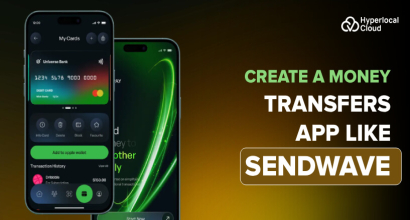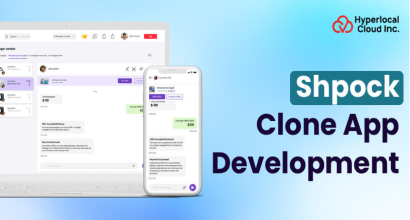With rapid urbanization and vehicle access, it has become cumbersome for businesses to keep track of their operations and streamline them with little effort. This has become possible with the extraordinary fleet management software that offers exceptional features like route optimization, real-time tracking, fuel consumption monitoring, etc.
Build and launch the best fleet maintenance software for your business to automate tasks and adequately maintain and manage the fleet of vehicles. Explore the phenomenal applications, features, and benefits of the software and how it will be beneficial to upgrade your logistics business.
What Is Fleet Management Software, And How Does It Work?
It has all the necessary functionalities to handle online fleet movement while fetching actionable insights. These are helpful in retrieving information, uplifting vehicle performance, enhancing efficiency, and massively reducing costs. The software is well-equipped with advanced technologies that help organizations or businesses synchronize their operations, leading to proper management.
The software helps dispatchers track the fleet in real-time from a single location. Tracking is used to monitor the vehicle, check the driver's behavior and the fleet's overall safety via remote control facilities, and check speed limits and vehicle stolen recovery.
The fleet management software sends requests to the server connected with the database that contains all the details about the vehicles. Fleet management is also connected to Firebase cloud messaging, which sends notification instances and alerts to the driver app. Moreover, external APIs like payment systems, fuel cards, and Google Maps are linked with the server for route planning, tracking, and other data entries.
Transforming Businesses With Our Fleet Management Software Development Services
Types Of Fleet Management Software We Build
Bus Fleet Management Software
It is helpful for medium—or heavy-duty vehicles, including trucks, to handle complex data, monitor fuel prices, track movements, check driver behavior, and recognize inefficiencies. It is also helpful in lowering operational costs with maximum uptime.
EV Fleet Management Software
This fleet management software monitors the entire fleet of electric vehicles, practices fleet planning, increases demand forecasting, limits lead time, and more. Advantages include cost savings, positive environmental impact, accessible, actionable reporting, and effective resource utilization.
Taxi Fleet Management Software
Such software helps manage light vehicles like cabs and taxis. It helps with convenient planning and trip optimization. Real-time tracking tools help fleet managers track the condition, location, and availability of vehicles. Moreover, it offers a seamless experience for both owners and drivers.
Core Features Of Fleet Management Software
Tracking Vehicle
This uses GPS technology to track locations in real-time. It helps optimize the vehicle's route, decreases drivers' exposure to risks, and improves delivery times; it provides rich location history to track and analyze patterns to reduce unauthorized usage, thus saving a lot of cost with enhanced accountability.
Driver Management
Provides information about driver behavior through speed, braking, and acceleration patterns. This allows training needs to be identified while promoting safe driving practices to prevent accidents and comply with regulatory requirements. Tracking performance metrics encourages safe driving incentives and overall fleet performance improvement.
Reporting and Analytics
Advanced reporting capabilities provide fleet operations insights into a variety of performance analysis, including cost analysis, vehicle performance, and compliance metrics. Fleet managers can further tailor the dashboards to understand the better visualization of the data for decision-making. The analysis allows for future identification and remediation of trends and opportunities to improve efficiency and add costs besides enhanced operational efficiency.
Mobile Access
The fleet management solutions allow mobile access, which is real-time access to all fleet data anytime, anywhere. Managers and drivers can now communicate effectively, access critical information, and quickly report any issues. Mobile access can only be enhanced through responsiveness in fleet operations.
Integration Ability
Fleet management software can integrate into other business applications such as accounting, human resource and customer relationship management applications. This smooths out the flow of information across different applications, letting firms attain better operational efficiencies through strategic planning and successful execution.
Route Optimization
Fleet management software analyzes traffic patterns and road conditions with delivery schedules to optimize routes. This minimizes fuel consumption, reduces travel time, and maximizes the number of deliveries completed on schedule. The dynamic updating of routes according to real-time data benefits maximum operational efficiencies and cost reductions. It minimizes wear and tear on vehicles, which, in turn, contributes to a longer lifespan with lower maintenance expenses.
Maintenance Scheduling
The fleet management software could automate maintenance schedules about usage and particular manufacturer requirements. It offers mileage, engine hours, and service records, showing when the motor needs an overhaul. This would prevent untimely breakdowns, ensure safety compliance, and allow the vehicles to serve for a more extended period. The fleet management system also allows effective utilization of resources by planning for repair and budgeting appropriately, thereby enhancing efficiency in operations.
Fuel Management
The fuel management feature tracks the fuel used and how much is spent on fuel throughout the fleet. Managers can analyze fuel usage patterns, detect inefficiencies such as taking the wrong route, and plan strategies to lower fuel expenses. It further aids in budgeting and forecasting when preparing for fuel expenses to result in an overall profit for the company.
Asset Tracking
The fleet management software allows real-time tracking of vehicles and assets with the help of GPS technologies while monitoring location and status, thus improving security by reducing the risk of theft and facilitating quick recovery if lost. Asset tracking helps efficient resource allocation and informs fleet managers about vehicle utilization patterns. Data analysis helps businesses make informed decisions about their fleets' expansion, replacement, or optimization for better operational efficiency.
Compliance and Reporting
Fleet management software helps organizations maintain regulatory compliance by tracking documents, inspections, and certifications for all vehicles. It can generate audit reports to ensure the vehicle meets health, safety, and environmental standards. However, it also brings greater transparency and accountability to the fleet to enhance decision-making and resource allocation.
Build Robust Fleet Management Software With Our Industry Experts
Steps To Build A Fleet Management Software
Requirements Gathering
In the beginning, it becomes crucial to contact the fleet managers and drivers to obtain input regarding essential features such as tracking, maintenance, fuel management, and reporting. Establish clear objectives to guide the development process and ensure that the software effectively addresses real-world problems.
Prototyping
This stage involves creating wireframes and prototypes to visualize the user interface and experience. Determine the appropriate technology stack, focusing on scalability, performance, and ease of integration with existing systems for smooth development.
Development
It involves backend development with server-side logic, database structures, and APIs. On the front end, this will be represented by a responsive, user-friendly interface on web and mobile devices. Third-party services will be integrated to include GPS tracking, fuel management systems, or other functionalities that enable immediate data in real-time.
Quality Assurance
Software testing is done to ensure that individual units work correctly, followed by integration testing to ensure that modules work correctly and synchronized.
Finally, UAT testing ensures that users are satisfied that the developed software works correctly, fulfills all the requirements, and generates a satisfying user experience before final deployment.
Deployment
Deployment prepares the production environment for deployment while ensuring proper configurations are optimized. The software is then launched for public use.
Maintenance and Support
System performance is constantly monitored, and all possible faults are corrected. Maintenance updates are frequently performed to address bugs, add new features, and improve security. Continuous customer support is provided to resolve users' inquiries, which can be analyzed to identify areas for improvement in the long run to ensure long-term satisfaction and applicability of the software.
Trending Technologies Used In Fleet Management Software
Artificial Intelligence
AI-driven fleet management software helps maintain real-time fleet analytics, streamline operations, route recommendations, elevate maintenance decisions, optimize fleet performance, etc.
Big Data
This technology utilizes advanced tools to analyze highly complex datasets. Fleet management software will increase team connectivity, decision-making, and productivity and reduce latency, aiding in smooth operation management.
Internet of Things
The integration of IoT in the software helps fetch real-time insights about engine data, driver location, etc. With this massive data, freight dispatch is streamlined, and within the fleet ecosystem, each function is optimized, thereby increasing customer satisfaction to the fullest.
Remote Fleet Management
This technology is integrated with the vehicle's OBD device, which helps send data along with the live location to the remote location. Businesses will receive quick notifications and timely updates on fleet activities and an intuitive dashboard that provides overall fleet performance, seamless coordination, etc.
Telematics Tracking
This contemporary technology embedded in fleet software maintains the effectiveness of fleet operations. With GPS tracking facilities, fleet managers can accurately monitor vehicle locations. Also, with regular data insights, route planning can be optimized, delivery times can be minimized, and fuel utilization can be reduced.
Advantages Of Fleet Management Software
Real-Time Monitoring
GPS tracking and real-time access to information enable fleet managers to seamlessly track vehicle locations and statuses. This allows them to make timely decisions and react to changing situations or emergencies.
Enhanced Efficiency
Fleet management software optimizes routing and scheduling, reducing travel time and fuel use. This subsequently boosts productivity levels while enabling the same number of deliveries or services in a given time frame.
Cost Cutting
It monitors fuel usage, vehicle maintenance, and driver performance and finds areas where expenses can be reduced. This would automatically reduce fuel costs, lower maintenance expenses, and less downtime.
Better Compliance
Fleet management software monitors regulatory requirements, such as inspections or paperwork. Automated alerts for local and federal compliance help reduce the chances of fines and enhance operational integrity.
Higher Accountability
The software tracks drivers' activities and vehicle usage, promoting accountability in the workplace. This also ensures open reporting, allowing managers to address issues and incentivizing healthy driver behavior.
Improved Safety
It monitors the driver's performance and condition, encouraging safe driving. Risk behavior is detected, and regular maintenance is planned, eliminating accidents and enhancing fleet safety.
Scalability
Fleet management software is easy to scale with growing business needs. As companies grow, the software can accommodate more vehicles to keep pace with efficient operation.
Simplified Maintenance
The maintenance management capabilities will automate scheduling and tracking service, which has reduced accidents due to breakdowns. Such proactive maintenance increases vehicle life cycle and reliability.
Better Customer Service
These fleets will now use fleet management software to optimize routes and take advantage of better delivery times. Such improvements will increase customer satisfaction with on-time deliveries and well-communicated issues, leading to closer customer relations.
Navigate The Fleet Dynamics With Our Fleet Management Software Solutions
Why Partner With Us?
Hyperlocal Cloud has been in the business for 4+ years and has successfully delivered applications to businesses worldwide.
NDA
We sign an NDA agreement with our clients that will keep the confidentiality of the project intact.
Round-The-Clock Services
Our tech support team is available 24/7 to address and rectify issues during the app's development and maintenance.
Pocket-Friendly Prices
We will help you establish a cost-effective budget for the software development without compromising on the alluring features.
No Hidden Costs
We have a transparent pricing policy, meaning the amount we quote at the beginning remains the same after the project is completed.



